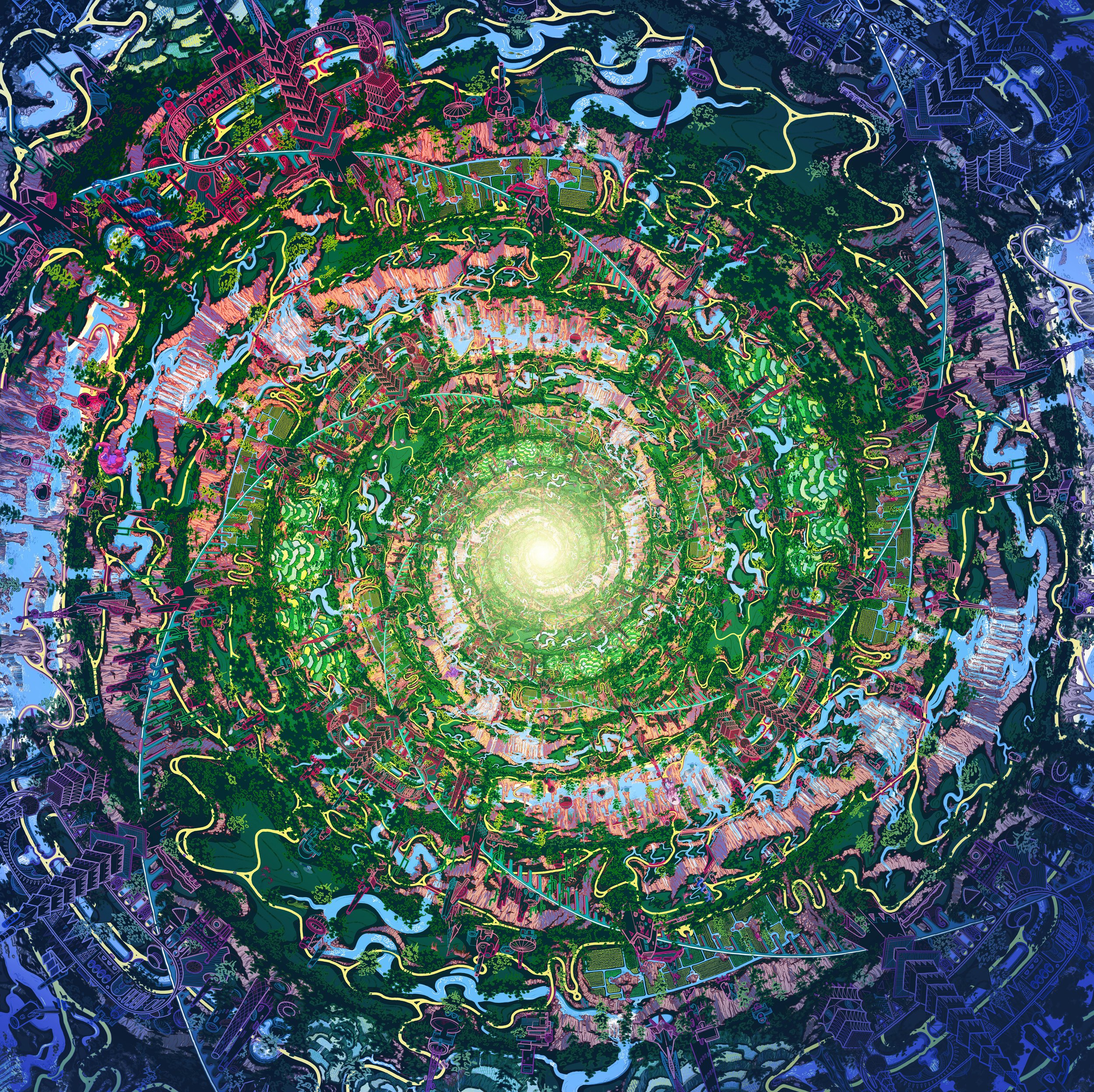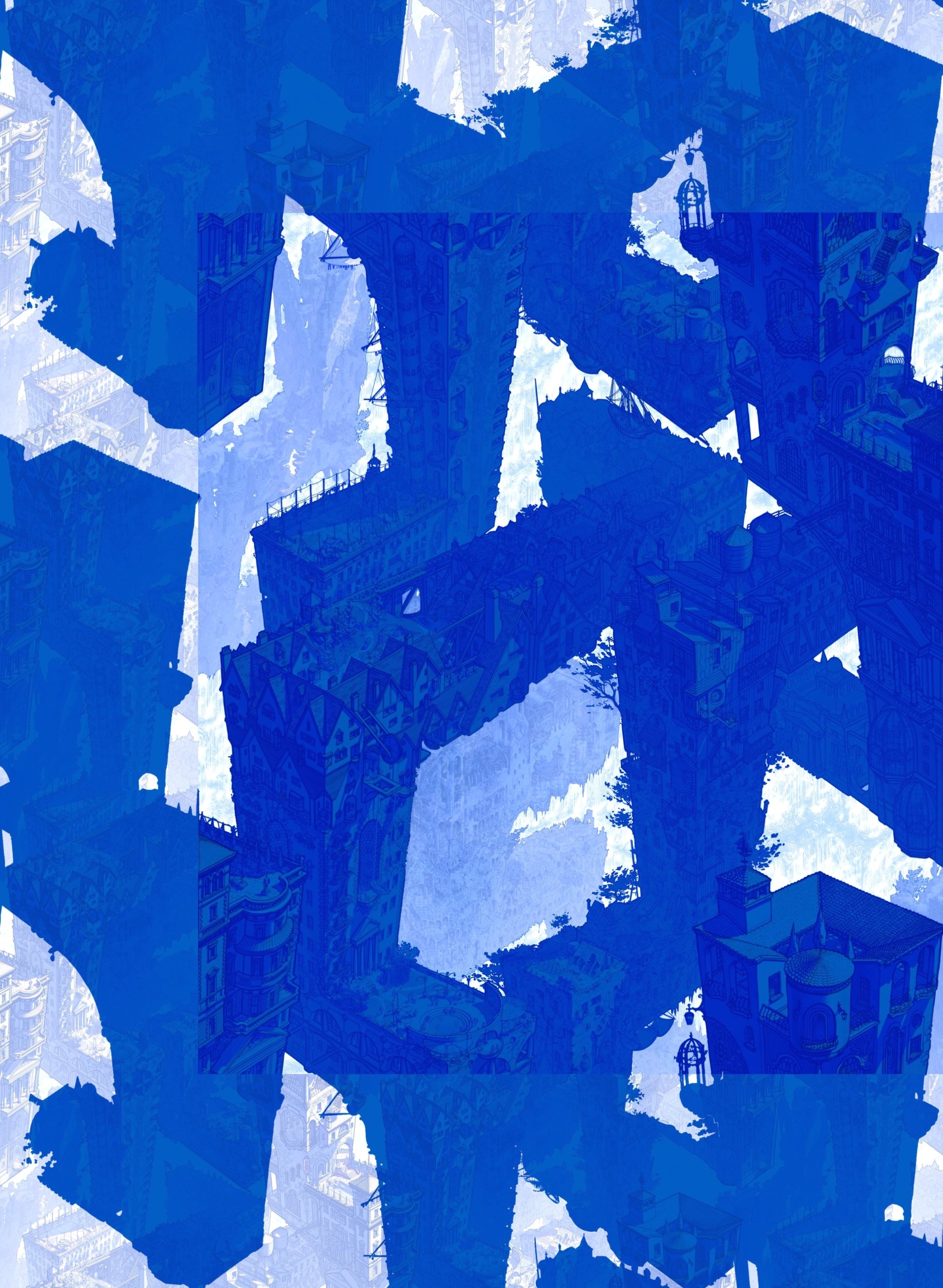-
This project is an exploration of the Bernoulli or Logarithmic Spiral to create the appearance of a city that recedes forever into the distance.
This curve was first depicted by the artist Albrecht Durer in 1525, and is named after the mathematician Jacob Bernoulli who defined its mathematical geometry over a century and a half later.
It interests me because all its segments are geometrically identical to each other, and as a result it never reaches a centre point, but instead continues to infinity in both directions. Theoretically, this city offers the ultimate in buyer choice - a house could be smaller than an atom, or bigger than a galaxy!
Because all segments are identical, the appearance of an infinite city can be created using a very limited set of unit types, scaled to suit their position within the spiral.
Impossible City 3

-
From the start of this project it was my plan to build a version of this Impossible City using 3D modelling software, as an experiment to see how plausibly an animation generated from a 3D model could maintain the illusion of the impossible geometry of an endless spiral city. This objective has ended up requiring far more labour to achieve than I had originally anticipated…
The aesthetic of 3D renders and fly-throughs produced in architectural practice has always tended towards the antiseptic and slick, reflecting their primary purpose - to sell. More variety exists here and there (including in student work), but the profile of ‘paper architecture’ within mainstream design is certainly lower than in previous decades.
In this project I was looking to challenge myself, and to push back against this tendency towards the smooth and impersonal, by creating a virtual city in which every single element was created by me - from the buildings and trees to the textures used to wrap them, right down to the clouds floating high above.
One of my drawings, but brought to life with depth and movement.
I’m not sure whether I’ve fully pulled it off, but I think it has been a worthwhile experiment that I intend to take further in future.
Above: the initial 2D drawing

-
Software is now widely available that can allow anyone to create what are routinely described as photo-realistic renders, though the glossy, pristine surfaces they depict bear little resemblance to real life.
Compared to these images my animations are rough at the edges - particularly as a result of my avoidance of ready-made textures. I prefer to view this as a differentiating characteristic of my work, rather than a weakness, and the means by which I maintain a connection to how I learned to draw by hand on paper long ago.
The animators at Aardman Animations have talked about the importance of not removing every fingerprint from their clay creations - it is the presence of flaws that communicates that these are crafted works, made painstakingly by hand. Although my animated city is 100% created using computers, my goal was to achieve something similar: to investigate how the signs of human creation can be embedded in digital work.
It is an experiment I intend to take further.
Embracing Imperfection
Below: hand-drawn concept sketches




